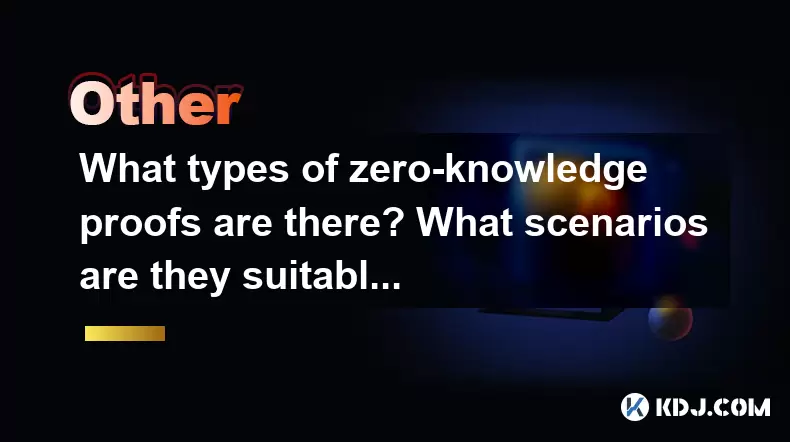-
 Bitcoin
Bitcoin $115500
-2.55% -
 Ethereum
Ethereum $3683
-4.76% -
 XRP
XRP $2.987
-4.87% -
 Tether USDt
Tether USDt $1.000
0.02% -
 BNB
BNB $780.2
-2.56% -
 Solana
Solana $169.9
-5.98% -
 USDC
USDC $0.9999
0.00% -
 Dogecoin
Dogecoin $0.2076
-7.07% -
 TRON
TRON $0.3270
-0.01% -
 Cardano
Cardano $0.7295
-6.68% -
 Hyperliquid
Hyperliquid $40.79
-5.25% -
 Sui
Sui $3.586
-6.89% -
 Stellar
Stellar $0.3949
-6.84% -
 Chainlink
Chainlink $16.75
-7.23% -
 Bitcoin Cash
Bitcoin Cash $568.5
-2.54% -
 Hedera
Hedera $0.2506
-8.16% -
 Avalanche
Avalanche $22.20
-6.84% -
 Ethena USDe
Ethena USDe $1.001
-0.03% -
 Toncoin
Toncoin $3.483
1.28% -
 UNUS SED LEO
UNUS SED LEO $8.932
-0.25% -
 Litecoin
Litecoin $106.0
-4.24% -
 Shiba Inu
Shiba Inu $0.00001237
-5.42% -
 Uniswap
Uniswap $9.357
-7.94% -
 Polkadot
Polkadot $3.667
-5.41% -
 Monero
Monero $307.9
-2.48% -
 Dai
Dai $0.9999
-0.02% -
 Bitget Token
Bitget Token $4.403
-3.06% -
 Cronos
Cronos $0.1393
-5.83% -
 Pepe
Pepe $0.00001067
-7.69% -
 Aave
Aave $259.9
-6.88%
What types of zero-knowledge proofs are there? What scenarios are they suitable for?
ZKPs enhance blockchain privacy and efficiency; types include interactive, non-interactive, zk-SNARKs, zk-STARKs, and Bulletproofs, each suited for specific scenarios.
May 15, 2025 at 06:22 pm

Zero-knowledge proofs (ZKPs) are cryptographic methods that enable one party to prove to another that a given statement is true, without revealing any information beyond the validity of the statement itself. Within the cryptocurrency and blockchain space, ZKPs play a crucial role in enhancing privacy and efficiency. There are several types of zero-knowledge proofs, each with specific characteristics and use cases. This article will explore the main types of ZKPs and the scenarios they are suitable for.
Interactive Zero-Knowledge Proofs
Interactive zero-knowledge proofs require communication between the prover and the verifier over multiple rounds. The classic example of this type is the zero-knowledge proof of knowledge of a Hamiltonian cycle in a graph, which was introduced by Goldwasser, Micali, and Rackoff in 1985.
- Scenario Suitability: Interactive ZKPs are suitable for scenarios where both parties can engage in real-time communication. They are often used in cryptographic protocols where proving the knowledge of a secret without revealing it is necessary. For instance, in certain blockchain consensus mechanisms, interactive ZKPs can be used to verify the correctness of a computation without revealing the underlying data.
Non-Interactive Zero-Knowledge Proofs
Non-interactive zero-knowledge proofs (NIZKPs) allow the prover to generate a proof that can be verified by anyone without any further interaction. This type of proof is particularly useful in blockchain applications where scalability and efficiency are critical.
- Scenario Suitability: NIZKPs are ideal for decentralized systems where interaction between parties is not feasible or desirable. For example, in privacy-focused cryptocurrencies like Zcash, NIZKPs are used to enable transactions where the sender, receiver, and amount are hidden, yet the transaction's validity can be publicly verified.
Zero-Knowledge Succinct Non-Interactive Argument of Knowledge (zk-SNARKs)
zk-SNARKs are a type of NIZKP that are succinct, meaning the proofs are short and can be verified quickly. They are used extensively in blockchain technologies to enhance privacy and efficiency.
- Scenario Suitability: zk-SNARKs are particularly suitable for blockchain applications where privacy and scalability are paramount. They are used in Zcash to enable shielded transactions, where the transaction details are encrypted, yet the network can verify the transaction's validity. Additionally, zk-SNARKs are used in Ethereum's layer 2 scaling solutions to improve transaction throughput and reduce costs.
Zero-Knowledge Scalable Transparent Arguments of Knowledge (zk-STARKs)
zk-STARKs are another type of NIZKP that offer scalability and transparency. Unlike zk-SNARKs, zk-STARKs do not require a trusted setup, making them more secure against potential vulnerabilities.
- Scenario Suitability: zk-STARKs are suitable for scenarios where transparency and security are critical. They are used in blockchain projects that prioritize decentralization and security, such as StarkWare's scaling solutions for Ethereum. zk-STARKs can be used to prove the correctness of computations in a way that is both efficient and verifiable by anyone, without the need for a trusted setup.
Bulletproofs
Bulletproofs are a type of NIZKP that are particularly efficient and do not require a trusted setup. They are known for their short proof sizes and fast verification times, making them suitable for a wide range of applications.
- Scenario Suitability: Bulletproofs are ideal for blockchain applications where efficiency and privacy are crucial. They are used in cryptocurrencies like Monero to enable confidential transactions, where the transaction amounts are hidden, yet the network can verify the transaction's validity. Bulletproofs are also used in other privacy-focused blockchain projects to enhance transaction privacy and efficiency.
Zero-Knowledge Proofs in Cryptocurrency Applications
Zero-knowledge proofs have found numerous applications within the cryptocurrency space, enhancing privacy, security, and efficiency. Here are some specific use cases:
Privacy-Focused Cryptocurrencies: Zcash and Monero use ZKPs to enable private transactions. In Zcash, zk-SNARKs are used to shield transaction details, while Monero uses Bulletproofs to hide transaction amounts.
Layer 2 Scaling Solutions: Ethereum's layer 2 scaling solutions, such as zk-Rollups, use ZKPs to batch multiple transactions into a single proof, improving scalability and reducing transaction costs.
Decentralized Finance (DeFi): In DeFi applications, ZKPs can be used to prove the correctness of computations without revealing sensitive data, enhancing the privacy and security of financial transactions.
Identity Verification: ZKPs can be used in decentralized identity systems to prove the possession of certain attributes without revealing the underlying data, enabling secure and private identity verification.
Implementing Zero-Knowledge Proofs in Blockchain Projects
Implementing ZKPs in blockchain projects involves several steps and considerations. Here is a detailed guide on how to integrate ZKPs into a blockchain application:
Choose the Right Type of ZKP: Depending on the specific requirements of your project, choose between interactive ZKPs, NIZKPs, zk-SNARKs, zk-STARKs, or Bulletproofs. Consider factors such as privacy, scalability, and the need for a trusted setup.
Design the Proof System: Design the proof system to fit your application's needs. For example, if you are building a privacy-focused cryptocurrency, you might design a system that uses zk-SNARKs to enable shielded transactions.
Implement the Proof Generation and Verification: Implement the algorithms for generating and verifying the proofs. This may involve using existing libraries and frameworks, such as libsnark for zk-SNARKs or the Bulletproofs library for Bulletproofs.
Integrate with the Blockchain: Integrate the ZKP system with your blockchain platform. This may involve modifying the blockchain's consensus mechanism to include the verification of ZKPs.
Test and Optimize: Thoroughly test the ZKP system to ensure its correctness and efficiency. Optimize the system to reduce proof sizes and verification times, enhancing the overall performance of your blockchain application.
Deploy and Monitor: Deploy the ZKP-enabled blockchain application and monitor its performance. Continuously update and improve the system based on user feedback and technological advancements.
Frequently Asked Questions
Q: Can zero-knowledge proofs be used to enhance the security of smart contracts?
A: Yes, zero-knowledge proofs can be used to enhance the security of smart contracts by proving the correctness of computations without revealing the underlying data. This can help prevent malicious actors from exploiting vulnerabilities in smart contracts.
Q: Are zero-knowledge proofs compatible with all blockchain platforms?
A: Zero-knowledge proofs can be integrated with most blockchain platforms, but the specific implementation may vary depending on the platform's architecture and consensus mechanism. Some platforms, like Ethereum, have built-in support for ZKPs, while others may require custom implementations.
Q: How do zero-knowledge proofs impact the scalability of blockchain networks?
A: Zero-knowledge proofs can significantly improve the scalability of blockchain networks by enabling the batching of multiple transactions into a single proof. This reduces the amount of data that needs to be stored on the blockchain, increasing transaction throughput and reducing costs.
Q: What are the potential risks associated with using zero-knowledge proofs in blockchain applications?
A: While zero-knowledge proofs offer numerous benefits, there are potential risks to consider. These include the complexity of implementation, the need for a trusted setup in some ZKP systems, and the potential for vulnerabilities in the proof generation and verification algorithms. It is essential to thoroughly test and audit ZKP systems to mitigate these risks.
Disclaimer:info@kdj.com
The information provided is not trading advice. kdj.com does not assume any responsibility for any investments made based on the information provided in this article. Cryptocurrencies are highly volatile and it is highly recommended that you invest with caution after thorough research!
If you believe that the content used on this website infringes your copyright, please contact us immediately (info@kdj.com) and we will delete it promptly.
- Rarible Integrates Somnia Blockchain: A New Era for NFT Gaming?
- 2025-08-01 12:30:11
- JPMorgan, Coinbase, and Crypto Mainstream: A New York Minute on the Future of Finance
- 2025-08-01 12:30:11
- Altcoin Season in Full Swing: Market Shift and Key Metrics to Watch
- 2025-08-01 12:50:12
- Ripple, XRP, and RLUSD: Navigating Growth and Innovation
- 2025-08-01 08:30:37
- Tether's Triumph: Profits, US Initiatives, and Stablecoin Supremacy
- 2025-08-01 09:11:00
- Ethereum, ZK-VMs, and Quantum Resistance: A New Era for Blockchain Security?
- 2025-08-01 09:30:12
Related knowledge

How to start a business using blockchain?
Jul 28,2025 at 12:36am
Understanding the Basics of Blockchain TechnologyBefore diving into the process of starting a business using blockchain, it's crucial to understand wh...

What is a token on the blockchain?
Jul 21,2025 at 07:00am
Understanding the Concept of a TokenIn the realm of blockchain technology, a token is a digital representation of an asset or utility that exists on a...

Can blockchain be used for identity verification?
Jul 18,2025 at 02:14pm
Understanding Identity Verification in the Digital AgeIn the modern digital landscape, identity verification has become a critical component for ensur...

What is a consensus mechanism in blockchain?
Jul 21,2025 at 03:01am
Understanding the Basics of Consensus MechanismsA consensus mechanism is a critical component of any blockchain network. It refers to the process by w...

How to explain blockchain to someone with no tech background?
Jul 18,2025 at 11:08pm
Understanding the Basics of BlockchainTo explain blockchain to someone with no tech background, it's essential to start with simple analogies and avoi...

Who invented blockchain technology?
Jul 23,2025 at 01:28am
Origins of Blockchain TechnologyBlockchain technology did not emerge from a single inventor or institution. Instead, it evolved through a series of ac...

How to start a business using blockchain?
Jul 28,2025 at 12:36am
Understanding the Basics of Blockchain TechnologyBefore diving into the process of starting a business using blockchain, it's crucial to understand wh...

What is a token on the blockchain?
Jul 21,2025 at 07:00am
Understanding the Concept of a TokenIn the realm of blockchain technology, a token is a digital representation of an asset or utility that exists on a...

Can blockchain be used for identity verification?
Jul 18,2025 at 02:14pm
Understanding Identity Verification in the Digital AgeIn the modern digital landscape, identity verification has become a critical component for ensur...

What is a consensus mechanism in blockchain?
Jul 21,2025 at 03:01am
Understanding the Basics of Consensus MechanismsA consensus mechanism is a critical component of any blockchain network. It refers to the process by w...

How to explain blockchain to someone with no tech background?
Jul 18,2025 at 11:08pm
Understanding the Basics of BlockchainTo explain blockchain to someone with no tech background, it's essential to start with simple analogies and avoi...

Who invented blockchain technology?
Jul 23,2025 at 01:28am
Origins of Blockchain TechnologyBlockchain technology did not emerge from a single inventor or institution. Instead, it evolved through a series of ac...
See all articles

























































































